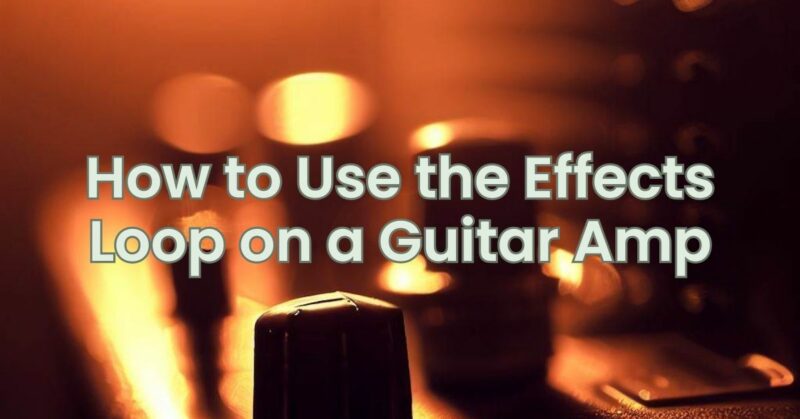The effects loop on a guitar amp can open up a world of sonic possibilities, allowing you to incorporate various effects pedals and processors into your signal chain with precision and flexibility. However, understanding how to properly use the effects loop is essential to achieve the desired results. In this article, we will explore the concept of the effects loop, its purpose, and provide a step-by-step guide on how to use it effectively.
Here are the steps on how to use the effects loop on a guitar amp:
- Connect your effects pedals. The effects loop on a guitar amp will have two jacks, one for the send and one for the return. Connect the send jack to the input of your first effect pedal, and the return jack to the output of your last effect pedal.
- Set the amp’s effects loop level. The amp’s effects loop level will control how much signal is sent to the effects loop. You may need to experiment with this setting to find the right level for your sound.
- Play with your effects pedals. Once your effects pedals are connected and the amp’s effects loop level is set, you can start playing with your effects pedals to find the sound that you like best.
Here are a few tips for using the effects loop on a guitar amp:
- Use different types of effects pedals. There are many different types of effects pedals available, so experiment with different types to find the sounds that you like best.
- Place your effects pedals in different order. The order of your effects pedals can have a big impact on the sound, so experiment with different orders to find the sound that you like best.
- Use the effects loop to create different sounds. The effects loop can be used to create a variety of different sounds, such as clean and distorted tones, or ambient and spacey sounds.
The effects loop on a guitar amp is a great way to get a more versatile and professional sound. With a little practice, you’ll be able to use the effects loop to create the sound that you want.
Here are some additional tips for using the effects loop on a guitar amp:
- Use a buffered pedal in the effects loop. A buffered pedal will help to keep the signal from your guitar clean and clear.
- Use a noise gate in the effects loop. A noise gate will help to reduce noise from your guitar and pedals.
- Use an expression pedal in the effects loop. An expression pedal can be used to control the effects in your effects loop, such as the delay time or the reverb level.
The effects loop on a guitar amp opens up a world of sonic exploration, allowing you to incorporate time-based effects and rack-mounted processors seamlessly into your signal chain. By understanding its purpose and following the step-by-step guide provided, you can harness the full potential of the effects loop and take your guitar tone to new heights. Experiment with different effects combinations, tweak the settings and let your creativity soar as you explore the vast sonic possibilities offered by the effects loop on your guitar amp.


